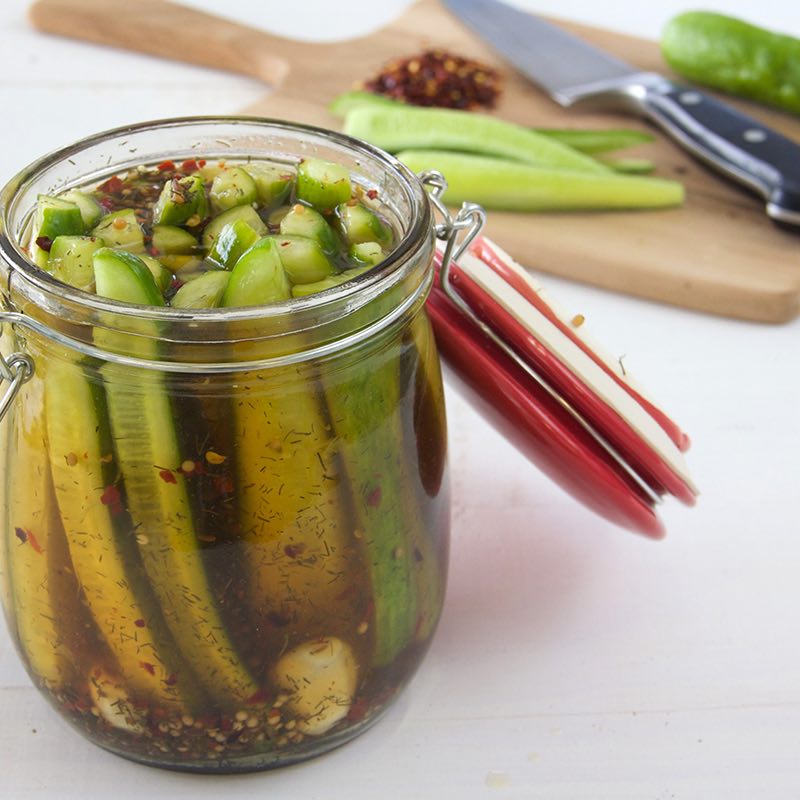Tips for Canning
- Always use the freshest produce for the best quality products. Wash produce and your hands before beginning a recipe. Sanitize all surfaces before and after canning, and use clean towels and utensils to avoid any contamination.
- Improperly processed canned foods can lead to serious illness. Always read and follow the directions of tested recipes from trusted sources. Do not try to adjust acid, starch, or sugar levels, or processing times. Only high-acid foods, like fruit and pickles, can be processed in a hot water bath; low-acid foods, such as meat, seafood, or most vegetables, require pressure canning to be safe. Our tips and recipes are for high-acid foods processed in a hot water bath only. Plan adequate time for cooking, filling, and processing, especially if you are new to canning.
- Use only new self-sealing lids. Check all lids, screwbands, and jars for any cracks and chips. Wash and sterilize canning jars, screwbands and lids according to the manufacturer’s directions. Keep jars hot until ready to fill.
- Use a clean funnel and measuring cup or ladle to fill the jars. Wipe the rims with a clean, damp cloth before placing lids on top to ensure jars seal completely during processing. Be sure to carefully follow the headspace required in your recipe for jars to seal properly. The headspace is the space between the top of your food and the top of the jar. Place a self-sealing lid on each jar and tighten screwbands until finger-tight (just until there is some resistance, no farther). Tightening screwbands too much can cause jars not to seal properly.
- Process sealed jars on a rack in a boiling water bath for the length of time specified in the recipe. During processing, the jars must be covered with 2 inches (5 cm) boiling water above the lids. Start timing the processing time when water returns to a boil.
- Remove the jars from the boiling water bath with canning tongs and place on cooling racks, wooden cutting boards, or towels set on a counter. Avoid placing hot jars directly on cold surfaces to reduce the chance of breakage. Let jars cool for 24 hours before moving. Do not tighten screwbands during cooling.
- After 24 hours, check the seals; the lids should be concave (pulled down) and not move up or down when pressed. Any jars that did not seal should be stored in the fridge.
- Wipe the jars with a clean damp cloth; label and store in a cool, dark place. Plan to use canned foods within one year, and refrigerate after opening. If jars show any signs of spoilage during storage (bubbling, discolouration, lids bulging, etc.), discard them immediately.
For more information, please refer to Health Canada or the Ministry of Agriculture, Food, and Rural Affairs for your province.








